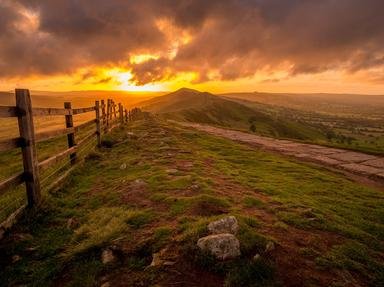Quiz Answer Key and Fun Facts
1. We begin our tour at the 9.5-acre Whipsnade Tree Cathedral. This lovely garden is planted in the rough form of a cathedral, with different tree species representing the various parts of the 'building'. The picture shows the cathedral's nave, formed by lime trees. In which English county can you visit this spectacular arboretum?
2. Erected in 1884, the war memorial known as the "Maiwand Lion" (pictured) commemorates the 329 men from a local regiment who died at the battle of the same name during the Second Anglo-Afghan War. The statue is the centrepiece of Forbury Gardens, which form the outer court of the ruins of the 12th-century abbey which stands just inside the eastern border of which town in the south of England?
3. Set on the banks of the Thames on a ridge of the Chiltern Hills near the Buckinghamshire village of Taplow, this Italianate mansion and estate was home to Nancy Astor and a regular meeting place for political intellectuals in the 1920s and 1930s. The 375-acre estate includes 180 acres of spectacular gardens. What is the name of this estate?
4. The original Anglesey Priory was built by Augustinian canons in the reign of Henry I at the beginning of the 12th century. The extensive landscape gardens that are popular with visitors to Anglesey Abbey today were laid out in the 1930s by the last private owner of the estate, 1st Baron Fairhaven. Situated in the village of Lode, it can be found on the northern outskirts of which university city?
5. The impressively-named "Lost Gardens of Heligan" is one of England's most popular botanical gardens. It is home to Europe's only surviving pineapple pit, old and huge rhododendrons and camellias, and even an area known as "The Jungle". Located near to the fishing port of Mevagissey, in which county can you visit these picturesque gardens?
6. Frequently chosen as England's favourite country house, the manor here dates back to the reign of Edward the Confessor in the 11th century. Standing on the east bank of the River Derwent in the Derbyshire Dales, the seat of the Duke of Devonshire has been home to the Cavendish family since 1549. Which stately home is this?
7. The spectacular Sheffield Park Garden is notable not only for the magnificent gothic house it encompasses but also for the landscape laid out in the 18th century by the legendary Capability Brown. The estate itself is mentioned in the Domesday Book of 1086. Despite the name, this estate can be found in which county in southern England?
8. The gardens at Hampton Court Palace remain today much as they were when originally laid out in grand style more than two centuries ago. Situated on the River Thames, the royal palace lies 12 miles upstream (west) of central London, but in which London borough can it be found?
9. Located on the outskirts of the small village of Horningsham in southwestern Wiltshire, the stately home at Longleat is an early example of an Elizabethan prodigy house. Although completed in 1579, it is for its 20th-century status as the world's first drive-through safari park outside Africa that it is best-known today. Longleat is the seat of which member of the Britain's peerage?
10. Created in the 1930s by the poet and gardening writer Vita Sackville-West, Sissinghurst Castle Garden is one of the most famous of all English country gardens. Owned by the National Trust since 1967, the gardens were the subject of an 8-part BBC Four documentary in 2009. In which English county can you visit these magnificent gardens?
Source: Author
EnglishJedi
This quiz was reviewed by FunTrivia editor
Pagiedamon before going online.
Any errors found in FunTrivia content are routinely corrected through our feedback system.


